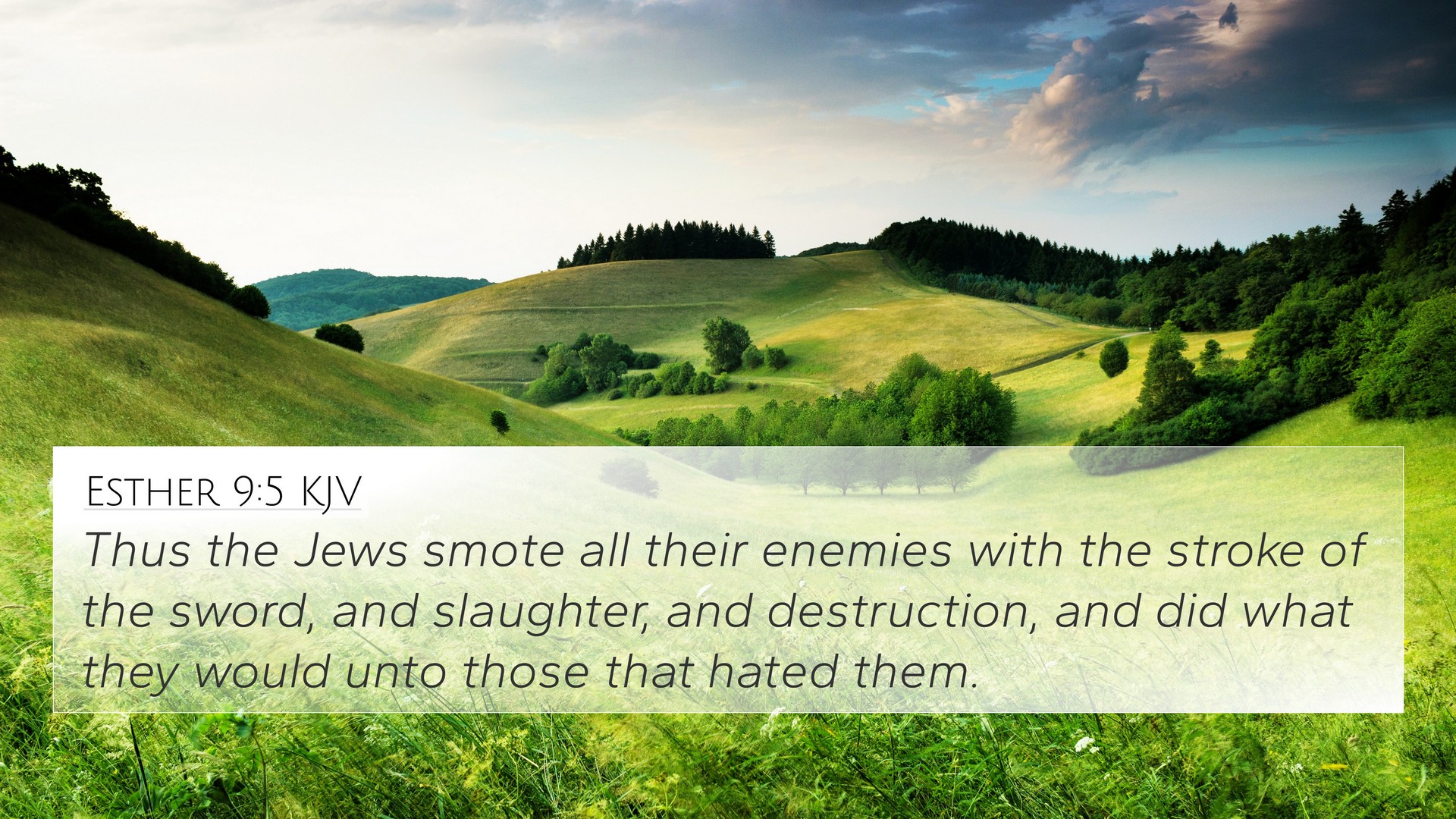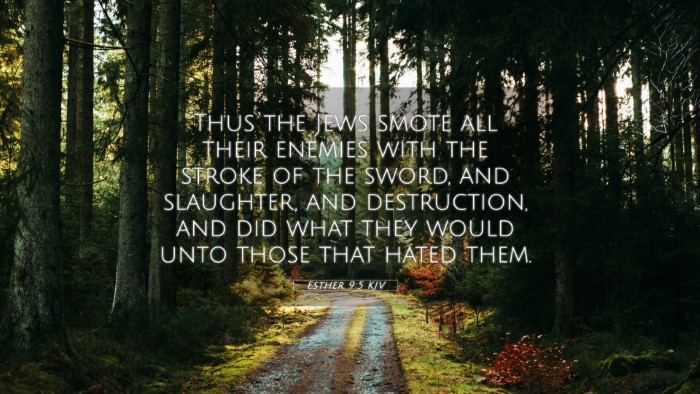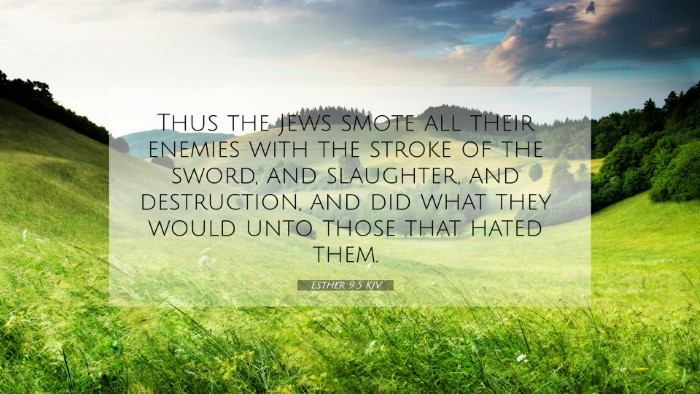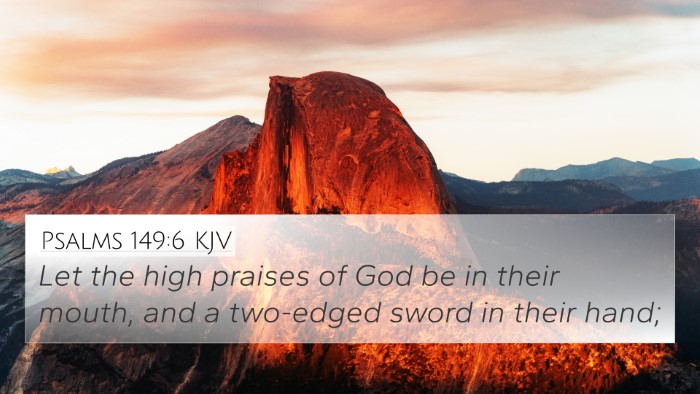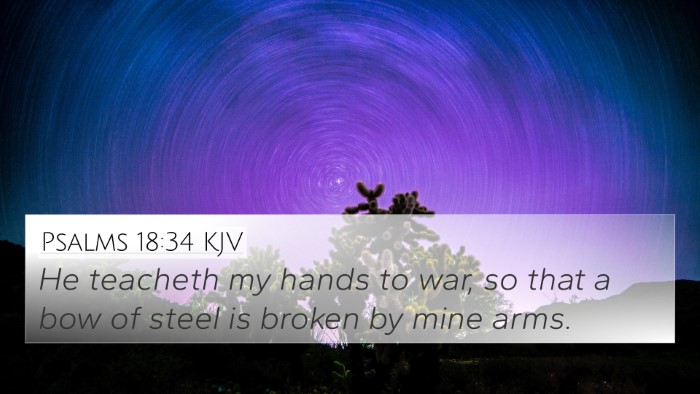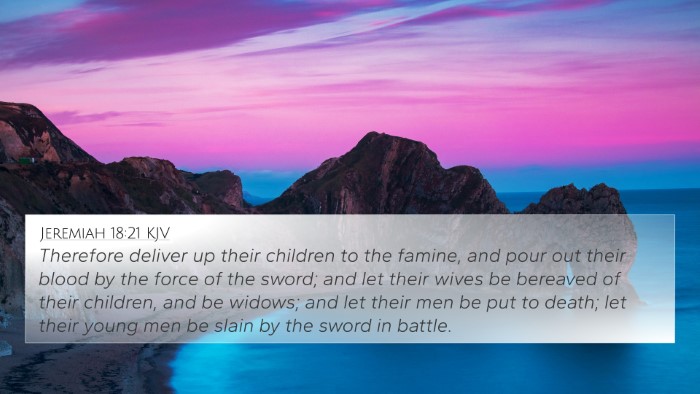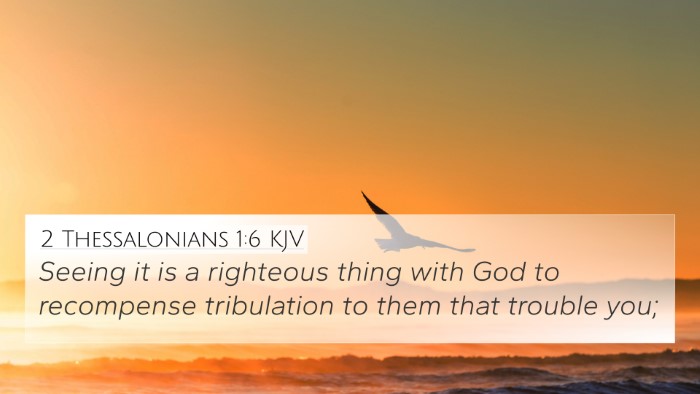Understanding Esther 9:5
Esther 9:5 states, "Thus the Jews smote all their enemies with the stroke of the sword, and slaughter, and destruction, and did what they would unto those that hated them." This verse recounts a significant moment in the book of Esther, highlighting the victory of the Jews over their adversaries. The context of this verse cannot be fully appreciated without understanding the surrounding events, the historical framework of the Jews in Persia, and their deliverance from impending annihilation.
Context and Significance
In the narrative, Esther, having become queen, and Mordecai, her cousin, orchestrate a plan that leads to the salvation of the Jewish people. The threat posed by Haman resulted in a decree for the annihilation of the Jews. However, through divine providence, Esther's courage and Mordecai's wisdom lead to a dramatic reversal where the Jews are empowered to defend themselves.
Detailed Insights from Public Domain Commentaries
-
Matthew Henry: Henry emphasizes the theological implications of the Jews' triumph. He notes that their victory is not simply a military success but a fulfillment of God's promise of protection for His people. The phrase "did what they would unto those that hated them" illustrates the complete reversal of fortune, showcasing divine justice where they who intended harm face retribution.
-
Albert Barnes: Barnes provides a more historical perspective, mentioning the significance of the day on which the Jews fought back their enemies. This day became a time of great celebration, which is observed in the festival of Purim. He remarks on how the Jews were not only justified in their defense but were also prescribed a way to remember their deliverance and the divine intervention that allowed them to act decisively against their foes.
-
Adam Clarke: Clarke discusses the moral and ethical considerations of this verse. He suggests that while the Jews acted in self-defense, their joy and gratitude for survival should be tempered with caution, underscoring that revenge is not entirely aligned with a spirit of grace. He encourages readers to reflect on the balance of justice and mercy in the life of faith.
Thematic Connections and Cross-References
Esther 9:5 serves as a crucial pivot point in the narrative, but it also connects thematically and scripturally with several other Biblical texts. Here are some key cross-references:
- Exodus 17:14-16 - God's promise to blot out the remembrance of Amalek, linking to the themes of divine protection and judgment.
- Psalms 37:14-15 - The fate of the wicked as contrasted with the righteous, suggesting God’s justice over enemies.
- Proverbs 11:21 - Assurance that the wicked will not go unpunished, which reinforces the justice theme present in Esther.
- Isaiah 54:17 - "No weapon that is formed against thee shall prosper," a promise reflecting God's protection of His people.
- Romans 12:19 - Paul's admonition not to take vengeance but to leave it to God's wrath—engaging with themes of self-defense versus revenge.
- Revelation 6:10 - The cry of the martyrs for justice, resonating with the sentiments expressed in Esther regarding the destruction of enemies.
- Deuteronomy 20:1-4 - Guidance on warfare, allowing for self-defense under divine approval, which parallels the actions of the Jews in Esther.
- Luke 1:74-75 - Reflection of God’s mercy for His people, connected through the deliverance themes in Esther.
- 1 Peter 5:8 - An exhortation to be vigilant against adversaries, resonating with the vigilance shown by the Jews.
- Jeremiah 51:20 - God’s promise of making His people a weapon against the nations, connecting to the empowerment of the Jews.
Reflections and Applications
The narrative of Esther 9:5 invites readers to reflect on the complexities of justice, mercy, and divine intervention. It encourages believers to recognize the working of providence in their lives, particularly when they face oppression or adversity. The triumph of the Jews can serve as a reminder that faithfulness and courage in the face of trials can lead to deliverance, paralleling the experiences of many Biblical figures.
Tools for Cross-Referencing
To delve deeper into scripture and make thematic connections, one can utilize various tools for Bible cross-referencing. Resources such as a Bible concordance or a cross-reference Bible study guide can be immensely helpful. Understanding how to use cross-references can enhance your study by highlighting conversations between different passages.
Exploring the connections between Old and New Testament themes also sheds light on the continuity of God’s redemptive work. For example, the parallels found in Esther regarding deliverance and God's faithfulness echo through the scriptures right into the teachings of Jesus and the Apostles, demonstrating a cohesive narrative throughout the Bible.
Conclusion
Esther 9:5 offers rich theological insights and practical applications for understanding God’s justice and mercy. Through the triumph of the Jews, we see a reflection of divine sovereignty and the powerful unfolding of God’s redemptive plan. As one engages with the entire narrative of Esther and connects it with other biblical texts, it becomes clear that scripture is a woven tapestry of themes emphasizing hope, justice, and divine protection that perseveres across all contexts.
